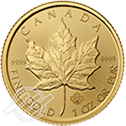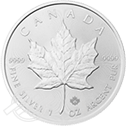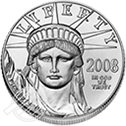The Possible Effects of a Weaker Dollar
The mighty dollar is not as mighty as it once was. Going back to the mid-1980s, the dollar index has lost about half of its value. HALF… Not only does the chart of the dollar index over the past three decades paint a bearish picture for the currency, but recent moves by other nations to move away from the greenback are also adding to bearish sentiment.
While the dollar has enjoyed a long run as king of currencies and the reserve currency of choice; that run may be coming to an end. China, Russia, even some European countries have already taken steps to move away from the dollar by establishing swap lines that bypass the greenback and SWIFT.
We expect this trend to continue. As more and more nations bypass the dollar, the dollar may no longer be needed as a reserve currency. Should other nations begin to shift away from dollars, all of those dollars will find their way back home to the U.S.
As in any other market, the laws of supply and demand will force the value of the dollar even lower.
Now is the time to consider how another significant leg lower in the dollar could potentially affect your life and investments…
Here are just a few of the issues that come into play in the face of dollar weakness:
- Inflation: A weaker dollar can lead to inflation. As the value of the dollar falls, goods and services become relatively more expensive. It takes more dollars, for example, to fill your car’s gas tank. While a little inflation can be a good thing, inflation can potentially spiral out of control quickly. Rapid surges in inflation can cause economic havoc as people attempt to keep up with rising prices. Inflation is not limited to the gas pump, either. Imagine for a moment the cost of fuel, food, health care, housing and other key areas of expenditure rising simultaneously.
- Wage growth may remain stagnant: As the dollar weakens, commodities may become relatively more expensive. A company that buys petroleum products, for example, must pay more for those products. While these companies may be more competitive in the international marketplace due to a falling dollar, they must also, for example, adjust for the relatively higher cost of raw materials. Because these companies may be paying more for raw materials, they may not be able to afford wage increases. In fact, they may even begin to outsource their workforces. For those that work for such companies, you may not only see little to no wage growth, but you may also be at risk of losing your job to workers overseas.
- Imports become more expensive: Think for a moment about all of the everyday products used in homes all across America that are imported. Medications, cars, clothing, food, luxury items and more to name just a few. All of these products would become relatively more expensive if the dollar weakens. Households could be forced to cut back on such expenditures or may have to cut back elsewhere in order to afford such products.
While the list of possible repercussions of a weaker dollar could go on and on, we think you get the picture…
Such a scenario is by no means far-fetched and a move away from the dollar has already been set in motion.
The question you should be asking yourself now is: “What steps can I take to help protect my portfolio and standard of living?”
We recommend looking at adding asset classes that may potentially increase in value as the dollar weakens. Dollar denominated assets like gold and other precious metals are one such asset class.
Gold often exhibits an inverse relationship to the dollar. Because gold is traded in dollars, gold prices often rise when the dollar is weak and fall when the dollar is strong. When the dollar is weak, gold becomes relatively less expensive for foreign investors.
Gold and other precious metals can, therefore, potentially hedge against a falling dollar.
If you are interested in adding wealth protecting assets to your portfolio-assets that may protect you from the coming dollar collapse-then consider gold and precious metals while they are on sale.
One of the simplest ways to gain exposure to these critical precious metals is through a precious metals IRA. Getting started with a gold IRA is easy. Our experienced executives are here to guide you, step by step, through the entire process. Call us today at 1-800-341-8584



